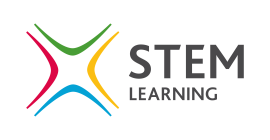- View more resources from this publisher
 National STEM Learning Centre and Network
National STEM Learning Centre and Network
Problem solving challenge: Fire detection with the Internet of Things
In this 5 hour Mathematics teaching pack, students are asked to consider how the internet of things can connect the previously unconnected, and how this can be used in fire detection systems.
Students are asked to work towards a CREST Discovery Award by designing a connected fire detection system in teams and presenting their work. Groups will construct loci, use geometrical representations and scale drawings, consider pricing strategies and calculate averages, as well as develop their problem solving, reasoning, modelling and team work skills.
In the activity, students are asked to play the role of employees in a company specialising in fire detection that have been asked to protect a business’s headquarters from fire. To do this they will strategically place fire detectors so as to cover as much of the business’ ground as possible. Groups will present their ideas for the company in a presentation, covering aspects such as a pricing strategy, the coverage offered and ideas on how the IoT could be used as an early warning system for all relevant stakeholders.
It is recommended that, prior to this activity, students have been introduced to the Internet of Things using this introductory mathematics activity
Show health and safety information
Please be aware that resources have been published on the website in the form that they were originally supplied. This means that procedures reflect general practice and standards applicable at the time resources were produced and cannot be assumed to be acceptable today. Website users are fully responsible for ensuring that any activity, including practical work, which they carry out is in accordance with current regulations related to health and safety and that an appropriate risk assessment has been carried out.
Downloads
-
Student guide 124.32 KB
-
Teacher guide 276.56 KB
-
Student map of the grounds 37.23 KB
-
Teacher presentation 788.75 KB
-
Student worksheet 45.91 KB




